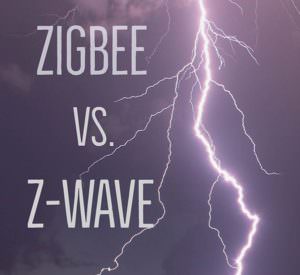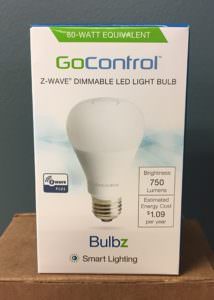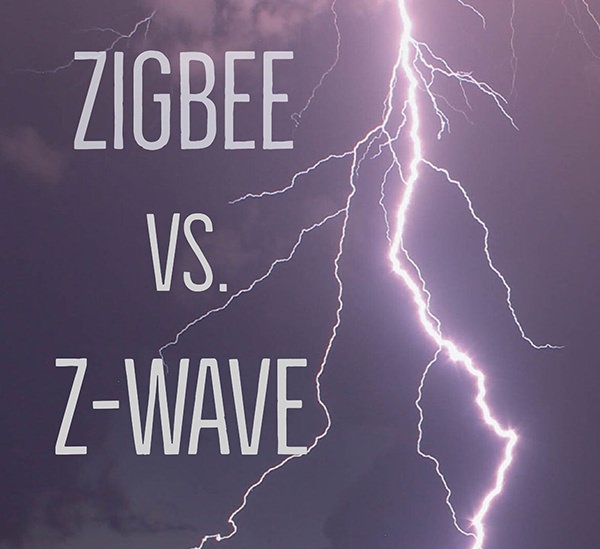
Early home automation relied on wired systems and technicians to make system changes and updates. Now there are wireless technologies that communicate via Wi-Fi and Bluetooth. Two of these types of technology are Zigbee and Z-Wave. To control your home automation devices, you’ll need to decide what “language” or wireless technology you’ll want your hub to use. Let’s take a look at both.
Zigbee
- Originally developed for commercial use. Now for use in residential, commercial, and industrial areas.
- Open technology that uses AES-128 encryption (same level of protection banks use) and network keys to keep your devices secure
- Zigbee Alliance with 400+ member organizations and 2200 products
How it works
Connects your Zigbee-enabled devices using a “mesh” system where information from one device jumps to others until it reaches the hub. This allows each device to operate as a repeater and pass the signal on to another device. This means your smart home system can work around obstacles (walls, etc.) and cover longer distances. (SafeWise)
Advantages
Many companies create devices that use Zigbee technology, so you can have a variety of products and manufacturers to choose from. You can mix and match what devices you want from what companies you want and add new devices as your needs change.
Downsides
- Because of the open technology, standards between companies can vary.
- Because Zigbee was not originally developed for home use, customers should have some technical knowledge for set-up and maintenance.
- 35-foot range between devices
Z-Wave

- Like Zigbee, it’s one of the original wireless network technologies for home automation.
- Proprietary technology developed specifically for home automation devices.
- Sets the standard for automated lighting, heating, security, appliances, and other smart devices.
- Z-Wave Alliance with 700 companies and manufacturers with over 2400 products
- Every Z-Wave network, and the devices within each network, are assigned unique IDs that communicate with your hub. Because of this, another hub can never control your hub’s connected devices.
- Like Zigbee, Z-Wave also uses AES-128 encryption.
How it works
Like Zigbee’s “mesh” system, Z-wave signals “hop” from device to device. The more devices, the further your signal can go.
Advantages
“Z-Wave is the only technology on the market to deliver applications-level interoperability and maintain backwards compatibility across all versions,” said Ben Garcia, Z-Wave field applications engineer for Sigma Designs, the California-based company that owns and licenses the Z-Wave standard. “When something is Z-Wave certified, it will work with any other Z-Wave product, past, present and future.” (Toms Guide)
The big selling point for Z-Wave is its interoperability. The Z-Wave Alliance makes sure that every Z-Wave device complies to a strict set of standards. Every Z-Wave certified device WILL work with every Z-Wave certified controller. Each one will be able to plug right into your existing Z-Wave network of devices. Most Z-Wave certified devices will display the trademarked Z-Wave logo. It is against the law for products to use the logo without the proper certification.
- Z-Wave is simple to use and user-friendly. Customers can set up a Z-wave system themselves or hire a professional to install a home system.
- Z-Wave is ideal for someone with a basic understanding of technology who wants to keep their home automation secure, efficient, simple to use, and easy to maintain.
Another difference between Zigbee and Z-Wave is the band at which they transmit data. Zigbee uses a 2.4 GHz band that can receive interference from Wi-Fi and Bluetooth systems. The higher frequency transmits more data but reduces the range of the signal, which can be further reduced by obstacles such as walls.
Z-Wave uses sub-GHz bands so it does not have the same interference issues as Zigbee. A Z-Wave signal can travel around 100 feet with no obstructions and 50 feet with walls and other obstructions. A Zigbee signal can travel only around 40 feet with no obstructions and presumably even less with obstructions.
At Heartland Security, we use Z-Wave devices. You can have our security system as the hub to control your smart home devices and add on more devices as you want. This gives you peace of mind from 24/7 monitoring with the convenience of a smart home. For more information, contact us.

